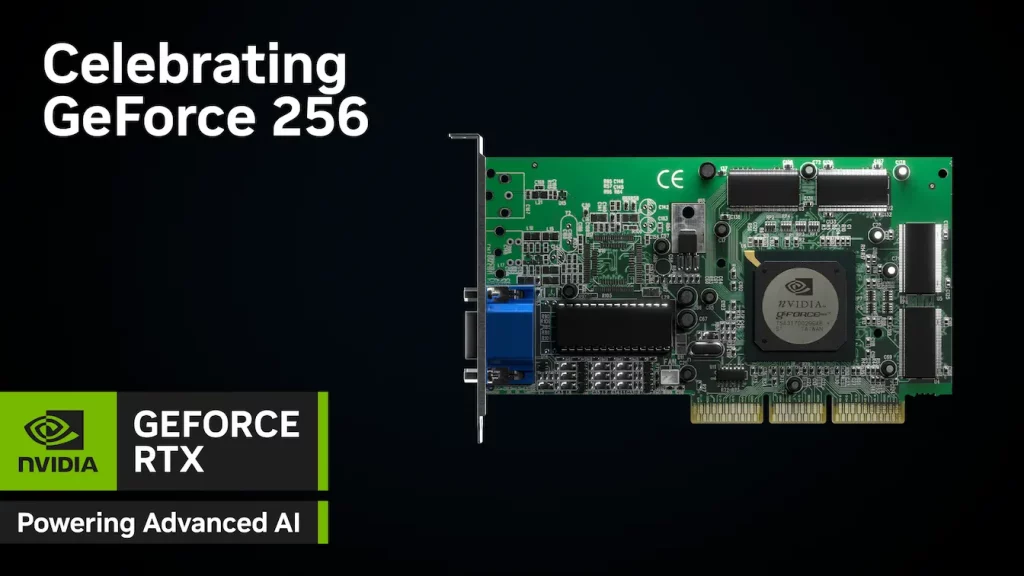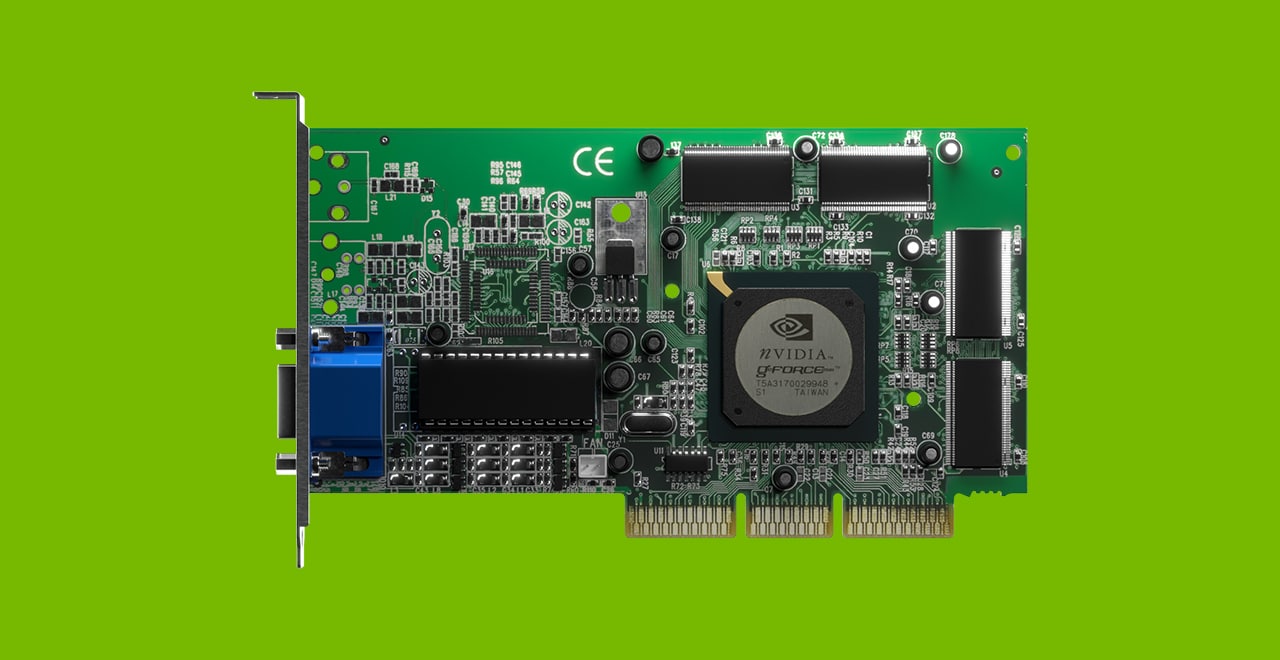NVIDIA is undeniably the leader in today’s AI-driven world, where it essentially holds the tools to unlock the vast untapped potential of AI. However, in the early days, they were just a small company with a vision to revolutionize graphics processing by making it more efficient and parallel, allowing games to run smoother by offloading the heavy lifting to a specialized component known as a graphics card.
In 1999, the world was introduced to the first-ever Team Green GPU, and in fact, the first of its kind globally – the NVIDIA GeForce 256.
 At 25 years old, this card was groundbreaking for its time. It was a game-changer for titles like Quake III Arena, one of the hottest competitive LAN games of the era, enabling smooth performance with realistic textures and dynamic lighting—features that stood out from the crowd. This allowed casual gamers to fully immerse themselves in the environment, while competitive players enjoyed responsive, lag-free gameplay.
At 25 years old, this card was groundbreaking for its time. It was a game-changer for titles like Quake III Arena, one of the hottest competitive LAN games of the era, enabling smooth performance with realistic textures and dynamic lighting—features that stood out from the crowd. This allowed casual gamers to fully immerse themselves in the environment, while competitive players enjoyed responsive, lag-free gameplay.
Over the years, countless iterations, architectural changes, naming shifts, and key milestones transformed NVIDIA into a dominant force in gaming. Phrases like “Want to play games? Get an NVIDIA card, plug it in, and enjoy” became the go-to advice from DIY shop owners worldwide.
The cards themselves grew more powerful, with enhanced rasterization capabilities, larger VRAM for higher frame rates, and features that made streaming more accessible to everyone.
But the game truly changed when NVIDIA intersected with AlexNet, a convolutional neural network (CNN) designed to train AI using GPUs which is an innovation unheard of at the time.
This inspired Jensen Huang to see the future where AI could unlock endless possibilities. By doubling down on artificial intelligence, NVIDIA achieved several “world’s first” breakthroughs in demonstrating AI’s potential. Notably, NVIDIA’s donation of the first DGX-1 AI supercomputer to OpenAI helped fuel the development of ChatGPT.
In the gaming world, the launch of the GeForce RTX 20 series showcased how hyper-realistic lighting demanded massive computational power, with AI emerging as the solution to offload the very challenges NVIDIA had created. This led to the birth of Deep Learning Super Sampling (DLSS).
Since then, each new generation of the GeForce RTX family has introduced even more AI-powered features and processing techniques, making things like 4K gaming which seemed outrageous in 2015 is now a standard for mid to high-tier PCs in 2024. And that’s just the consumer side; for developers and businesses, NVIDIA ACE is the next major innovation to watch.






